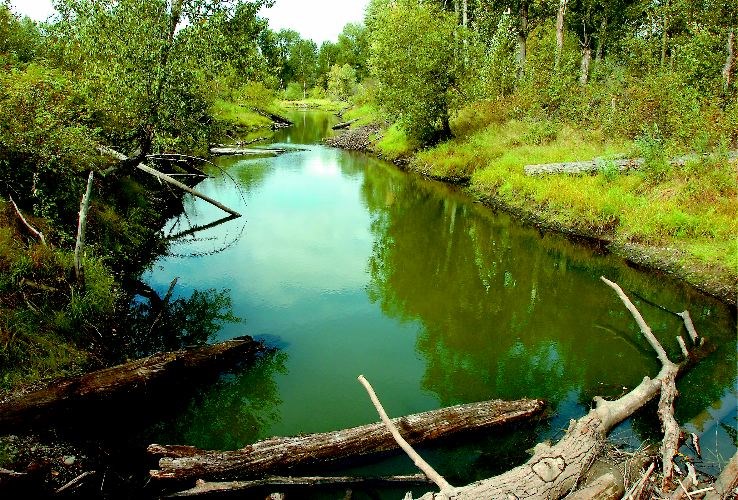For centuries, it has been the Canadian way to trap the beaver, but it might be easier for one local community to work around their busy bucktooth.
The village of Wells has a pastoral meadow alongside Williams Creek only a short walk from their downtown. Cows have used this meadow for a pasture, it has been used for horse racing, ball diamonds once existed on the spot, there are even remnants of house foundations where people once lived on the grassy flats. It is a prominent part of the town's pedestrian trail system.
But for the past few years, resident rodents have turned the meadow into a marsh. The municipal government tried to eradicate the pest by hiring a trapper to hunt them.
Nothing worked.
Now residents are flipping a coin over what should be done next.
"We have invested quite a bit of time and money in promoting the trail system, and a lot of that network has been blocked off from that end by all the water in that area," said Dave Jorgenson, a member of the Wells Trail Society and the owner of a couple of tourist-dependent businesses: White Gold Adventures and the Bear's Paw Cafe.
"We thought the solution might be to get rid of the beaver but the idea has emerged that - since we have an eco-conscious community and we try to promote the wild and natural features we have here - to embrace the beavers and develop wetland trails. But that takes a lot of money to build boardwalks and things like that and where is it going to come from? But we are a tourism community and a nature-sensitive community, so we want people to come here for these features and stay awhile. We don't know what to do."
Prince George has embraced both of those sides of the issue. Embracing the beavers at Shane Lake has been part of the attraction at Forests For the World and also along Hudson's Bay Slough and Cottonwood Island Park.
However, sometimes beavers fall trees or dam waterways - both of which can cause infrastructure damage. At the Historic Huble Homestead, they have been pests in years gone by, felling scads of trees along the Fraser River. It endangered some of their buildings, blocked trails, cost the operating society a lot of time and attention, and compromised public safety.
Not so this year.
"All those trees have been wrapped in wire to discourage that," said operations manager Krystal Leason. "That is working for us."
The Conservation Service advised that beavers were not causing complaints in the city this year, although at times they have had to hire or recommend certified trappers to private landowners to cull the colony.
One of them is Prince George's Mike Morris, president of the BC Trappers Association.
"Most municipalities across Canada have issues with beaver, from time to time, some more so than others," he said. "They do damage to hydro rights of way, plug culverts, sewage lagoons or water systems can be damaged by beavers and muskrats. I have had a couple of calls this year from private landowners outside the municipal boundaries but I haven't heard of anything within the city lines so far."
His usual tactic on the trapline is to reduce the beaver population but never eradicate it from any particular area. Eradication just causes influxes of new beavers, while conservative harvests keep the populations - and their damage - manageable.
Morris cautioned, however, that a beaver is not a docile creature. It will charge at a human or other animal that upsets it, and those teeth are not legendary wood chippers for no reason. "I give them a lot of respect, a lot of room. I would give them good odds in a fight with a fair-sized dog. They can really hurt you."



